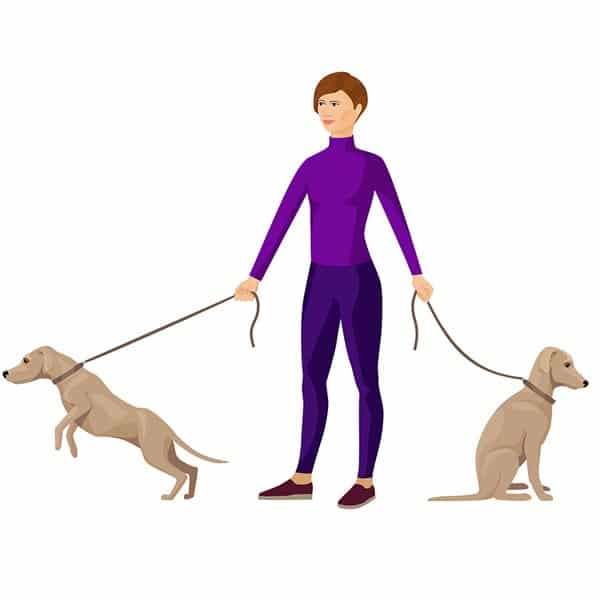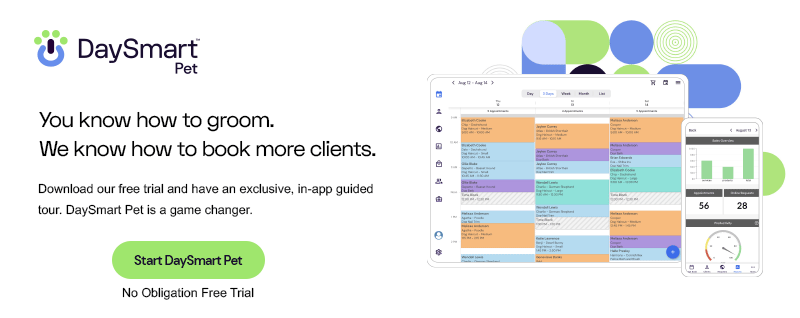Why You Need a Dog Temperament Test for Your Pet Care Facility
Almost every pet owner thinks their fur-baby is wonderful. However, as the owner of a pet-services business, taking their word for it could lead to disaster!
The truth is, just like humans, dogs have different temperaments and they’re not always sweet. Requiring a dog temperament test for every dog that enters your facility can help protect you, your staff, and other animals in your facility.
Don’t risk suffering irreparable damage to your reputation! Keep reading to learn more about the importance of temperament testing and how to temperament test a dog.
What is a Dog Temperament Test?
In simplest terms, a dog temperament test assesses whether a dog is a good fit for playing well and interacting positively with other dogs. These tests are designed to check for signs of aggression or any other issues that could impact the dog’s ability to safely interact with others.
A dog would fail a dog daycare temperament test, for example, if it showed certain signs of aggression like lunging or growling at people or other dogs. A dog that cowers and shows signs of being fearful or nervous around other dogs may also fail the test. Dogs that are overly nervous are likely to growl, snap, or show other aggressive behaviors if the other dogs get too near.

By requiring a dog temperament test, you’re weeding out dogs that are likely to cause problems in your facility. This helps ensure that your staff won’t have to deal with dog fights and that the other dogs in the facility remain safe.
Temperament testing isn’t only for aggression. A dog may not have any aggressive tendencies at all, but if it’s reserved and shy, then it’s not a good fit for playing with dogs that are rowdy and rambunctious.
Completing the testing on every dog will help you separate them by personality. This improves the chances that each dog will enjoy their time at the facility and reduce the chances of an injury or incident.
Temperament Testing Best Practices
While deciding to implement a temperament test is a great first step, the way you do it is also critical. You need to have standards that you enforce across the board and make sure that your staff is properly trained and aware of your policies.
First, make sure you have a formal policy for accepting dogs into your facility. Having a verifiable means for evaluating each dog and determining whether to accept them will ensure that every staff member is clear on the guidelines. It will also allow them to easily and clearly communicate the policy to prospective customers.
It’s also critical that your staff is all on the same page. Stress the importance of staff communicating with each other regarding each pet’s dog temperament test rankings so no one is ever caught by surprise.

One of the best ways to do this is to create a tagging system and keep detailed notes about each dog in your facility. Using a custom software can streamline this process. For example, create printable pet cards that include all of the important information – including temperament notes – in one single place.
Consider designated specific staff members to complete the temperament tests. This will help ensure the criteria is applied consistently and allow those staff members to really hone their assessment skills. Customers and staff are also often more comfortable when there’s a single (or a few) points of contact regarding temperament assessments.
The Temperament Testing Process
There’s no standard process for completing a canine temperament test. This is one reason why you’ll want to require your own assessment even if pet owners present a dog temperament testing certificate from another facility or trainer.
The process doesn’t take long and you’ll offer it for free, so there shouldn’t be any reason for potential clients to balk at this requirement. If they do, then this is a red flag that they’re not a good fit for your facility.
An assessment typically consists of the following steps.
1. Intake Paperwork/Phone Interview
The process starts by having a conversation with the pet owner or having them complete a series of forms. You’ll want to get the owner’s contact information and learn more about whether the dog has had issues with aggression or other behavioral problems in the past.
Your intake form will usually also ask for vet information and vaccination records. Lastly, you’ll need the owner to sign an agreement that outlines the legal issues, liabilities, and responsibilities for the dog in your care.
2. Initial Interview
On the evaluation day, invite the owner and their dog to your facility. Take some time to go through the initial interview paperwork and clarify any questions.
During this time, make sure to pay attention to the owner’s “vibe.” This includes how the dog acts around the owner and how the owner responds.
Trust your gut. If you have the feeling that the owner could be a problem client, this is your chance to avoid potential future headaches.

3. Evaluation
Next, remove the dog to another room to see how it behaves when the owner isn’t present. Note whether it’s hesitant to leave the owner and how it reacts to staff. If the dog reacts aggressively, stop the test and return the dog to the owner.
If the dog does well, introduce “tester” dogs that are known to be calm and interactive. Observe how the dog reacts. Finally, bring in toys and food and see if the dog has issues with resource guarding.
Unless your staff is already trained to safely perform these types of tests, it’s critical that you hire a dog trainer or animal behaviorist. They can do the tests initially and train your staff to safely complete successful temperament tests.
If the dog displays any aggression issues at any point during the process, stop the tests and don’t proceed. Bring the dog back to the owner and let them know they’re not a good fit for your facility.

Protect Your Facility Today
Now that you understand just how important a dog temperament test is, it’s time to implement one in your facility! This one simple move can protect your staff, keep all of the dogs in your facility safe, and help you avoid damage to your reputation.
A great software program will help you streamline this process and run your facility more efficiently. Take a look at our cloud packages, then sign up for our 14-day free trial today!




